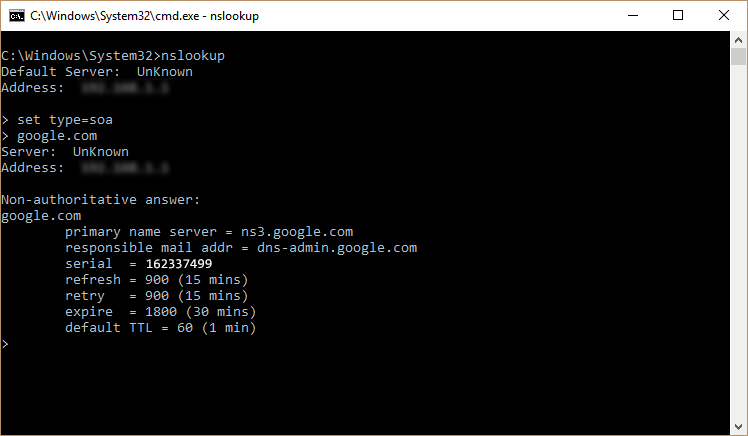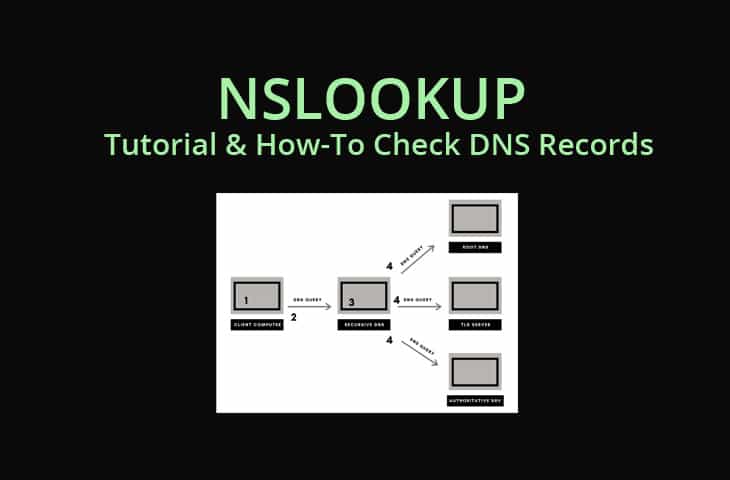

This will return the primary name server, responsible mail addresses, default ttl and more. The Start of Authority record indicates which DNS server is the best source of information for the domain. If you want to find the IP address of a domain name then use this command: nslookup domainname MX LookupĪn MX record lookup will find the mail server that is responsible for accepting emails for the domain. nslookup 8.8.8.8 A Record Lookup (Domain to IP Address) Use this command if you know the IP address and what to find the domain name. In each example, I show you the commands then a screenshot with the results. I’ll show you the most commonly used commands below. The most useful command switches are set type, server, and debug. There is a lot of options but in most cases, you will only need a few of them to verify DNS records. To view the syntax just type nslookup hit enter then type?
External nslookup tool how to#
If you are a system or network administrator it’s very important that you know how to quickly resolve DNS related issues.
External nslookup tool free#
This command is built into all Windows operating systems, it’s free and easy to use. That is why it’s important to know how to use the Nslookup command. You need a way to quickly troubleshoot and resolve these issues. If you have a local DNS server issue then your employees can’t work and business is impacted. You will be unable to browse websites, send an email, chat online, stream videos, and so on. When DNS is not working devices cannot communicate. Why you must learn the Nslookup command line tool In the examples below I will show you how to query different resource records. The above example used an A resource record which maps a domain name to an IP address. The computer is then able to communicate to .ĭNS uses resource records to provide details about systems on a network. The next DNS server says it knows the IP address and sends the request back to the computer.Ĥ. If it doesn’t know the IP address of the domain it will forward it on to the next DNS server.ģ. This can be your local Active Directory DNS server or your ISP DNS server. The DNS server that the client uses may not know the IP address. This will send a query to the DNS server to go fetch the IP address for Ģ. DNS will take the easy to remember name and map it to the IP address so devices can communicate.īelow I walk through how a computer uses DNS to resolve names.ġ. It would be hard to remember the IP address of every website or resource you access, words are easier to remember.

It will help you identify if it’s a client, a local DNS issue, or another DNS server (forwarding server or ISP).Ĭomputer and other network devices communicate by IP address. Understanding how DNS works will help you troubleshoot DNS issues faster.

I walk through the exact steps and provide several Nslookup examples.Īnd in this post, I’ll show you my tips for troubleshooting DNS. You’ll also learn how Nslookup can be used to troubleshoot DNS issues. In this tutorial, you’re going to learn how to use the Nslookup command to check DNS records.


 0 kommentar(er)
0 kommentar(er)
